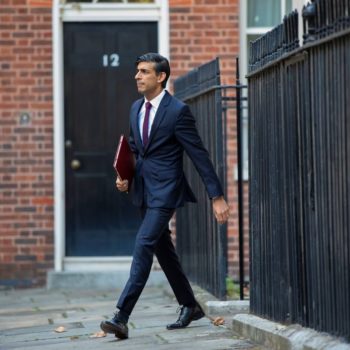The European Union prides itself on being a leader in the global low-carbon transition, even more so after President Trump decided to pull his country out of the Paris Agreement. There have been some fine words about this from a range of decision-makers, but, as so often in life, it all comes down to money.
The European Investment Bank warns there is a €100 billion investment gap for the European Union to achieve its 2030 climate and energy targets – these requiring a reduction of at least 40% in greenhouse gas emissions, an improvement of at least 30% in energy efficiency and a minimum share of 27% for renewables in the energy mix.
The upcoming Multiannual Financial Framework (MFF) thus becomes pivotal for the low-carbon transition, for it lays down the financial support for each of the EU’s political priorities in the medium-to-long term after 2020. The decision of the United Kingdom to exit the European Union scarcely helps the EU’s 2030 climate and energy framework. Not only will the UK no longer contribute to the attainment of targets, but also its absence will mean fewer EU resources could be available. If the EU27 do not agree on scaling up their financial contributions to the MFF, estimates point at an annual budget hole of €10 billion that would each year further widen the EU’s climate and energy financing gap.
Making every single euro count will be fundamental to the budgetary discussions and this will require a complete overhaul of how climate and energy is handled in the EU budget post-2020. As the European Court of Auditors has warned, the current approach of earmarking 20% of EU funds for climate-related purposes is both insufficient and flawed. Moreover, it sends a contradictory signal that the remaining 80% does not need to be consistent with the EU’s climate and energy policy. For example, an excessive emphasis on a narrow definition of ‘energy security’ has led programmes with an energy angle, such as Connecting Europe Facility and projects under the European Structural and Investment Funds (ESIF), to focus too greatly on gas infrastructure, risking locking in investment in the high-carbon economy.
Maintaining inconsistencies between objectives and allocation of EU funds would send the wrong signals, exacerbating investor uncertainty and eventually putting the EU’s economy at risk. Therefore, the prospects of the EU’s climate and energy framework are increasingly linked to the world of finance and the ability to provide the right incentives for investors to put their money into future-proof alternatives. In this regard, the work of the Commission-sponsored High-Level Expert Group on Sustainable Finance provides yet another reason to be optimistic.
For example, initial recommendations launched last month aim at providing clarity for the financial sector to unlock investments in energy efficiency and sustainable transport, as well as clearing the way for a common European standard for green bonds and other sustainable financial assets. Therefore, there is already highly promising ground for the EU to show its ambition and set up a new financial framework to live up to its commitments to sustainable development across the board.
For these reasons, the upcoming discussions on the next EU budget shall not be regarded as alien to the climate and energy agenda.
The proposal that the European Commission is expected to table by mid-2018 will make or break Europe’s capacity to shape the global low-carbon transition.
One idea is EU funds could be allocated to retraining workers in areas heavily dependent on high-carbon activities to assist them as their livelihoods are impacted by technological change.
Due to the profound changes that the MFF is expected to bring about post 2020, the debate must be made more accessible and participatory for other actors. Cities and regions will be most affected by these changes and they play a key role in the deployment of clean energy solutions and sustainable urban transport systems. Therefore, the needs and concerns of cities and regions should be taken into account both in the process leading to the final Commission proposal and in its content. Bearing all this in mind, the MFF post-2020 has the potential to become the flagship of EU’s climate and energy ambitions, bringing about real change and making Europe’s economy more attractive, inclusive and resilient to future shocks.



